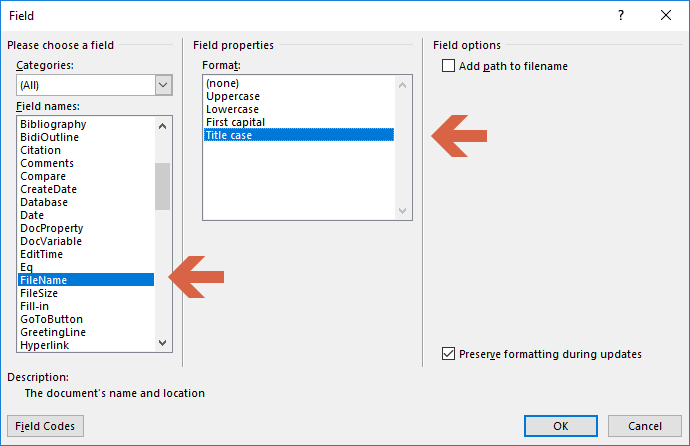
Click Close on the Header and Footer toolbar to return to the main document.įind details of our Microsoft Word training in the London area of UK or our Microsoft Word training in the Hampshire, Dorset and Wiltshire areas or details of our Microsoft Word training in the Sydney area of Australia. The file path of the document will be displayed in the footer. Your cursor will appear in the header section of the document and the Header and Footer toolbar will be displayed.Ĭlick the Switch Between Header and Footer icon.Ĭlick Filename and path. To add file path to footer in Microsoft Word 2003 or earlier:Ĭlick View – Header and Footer. The file path of the document will be displayed in the footer. In the Insert group, from the Quick Parts dropdown, click Field.įrom the Field names selection, click FileName.Īt the right hand side, click Add path to filename.Ĭlick OK. Enter the document name in the Title Field (i.e. The Header and Footer Tools Design contextual ribbon will appear. This is where you can add metadata about the file, such as the document name, owner, date and keywords. To add file path to footer in Microsoft Word 2007 or Microsoft Word 2010:Ĭlick Insert – Footer and select your preferred footer style. The file path will be displayed in the footer of your document. In the Insert group, click the Document Info dropdown and select File Path. Click where you want the file path to appear. The Header & Footer Tools Design contextual ribbon will appear. To add file path to footer in Microsoft Word 2013 or Microsoft Word 2016:Ĭlick Insert – Footer and select your preferred footer style.


This information could be included in the footer, at the bottom of each page in the document. If you are sending a Microsoft Word document to a colleague you may want them to know where on the network the file is located.


 0 kommentar(er)
0 kommentar(er)
